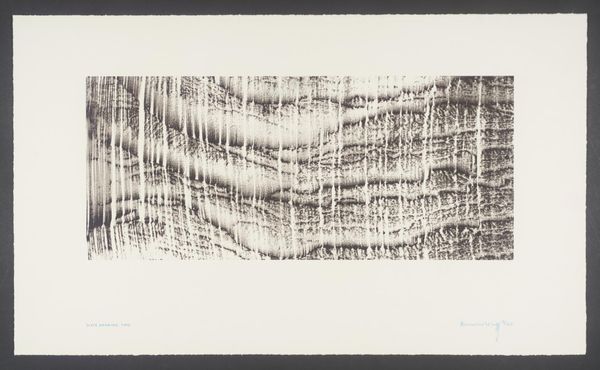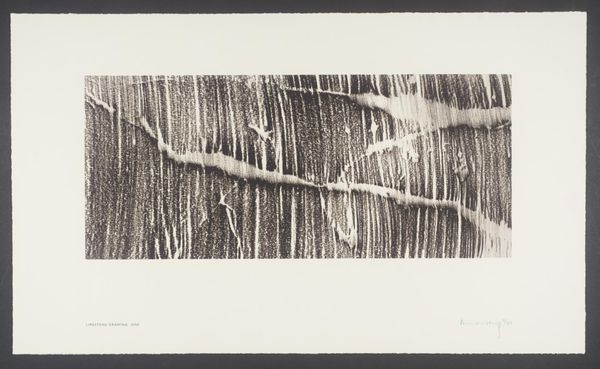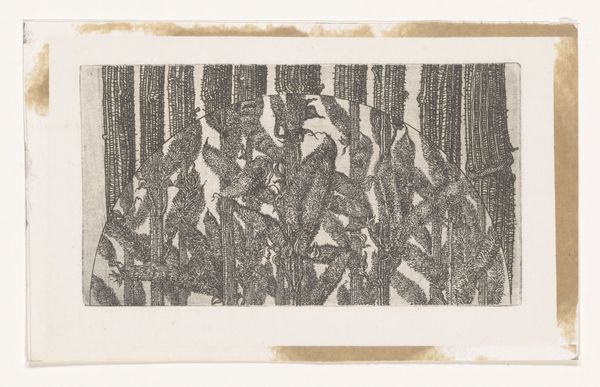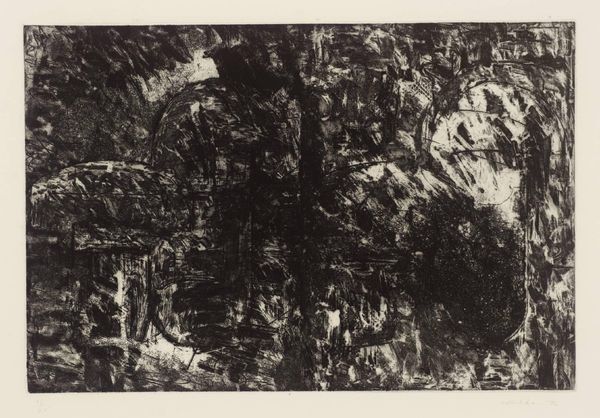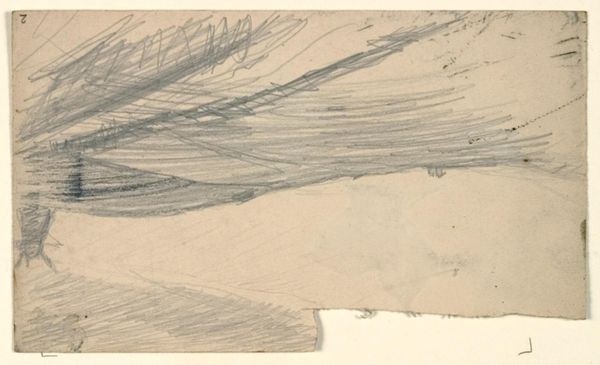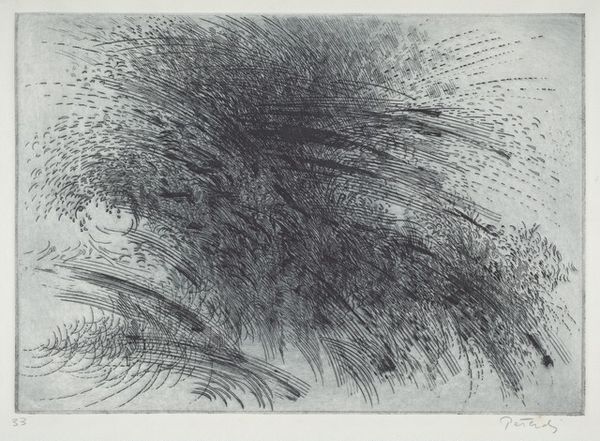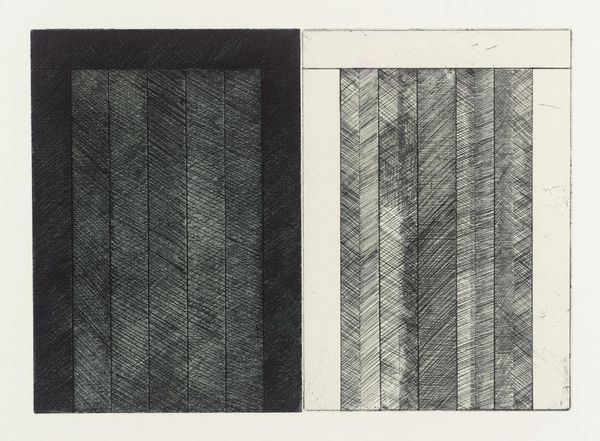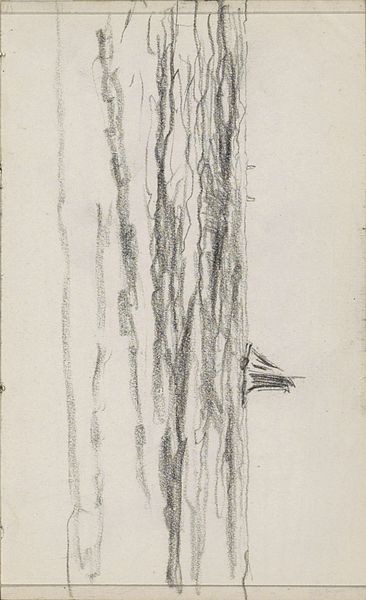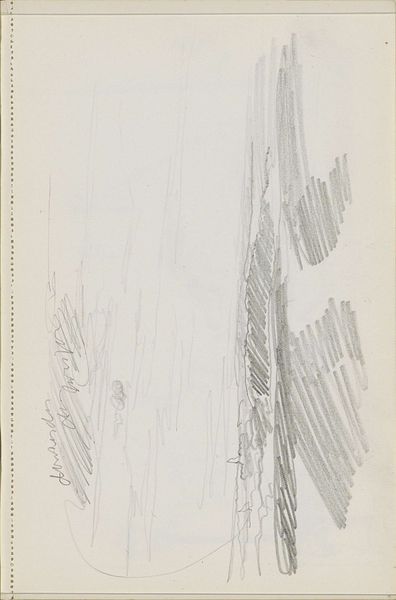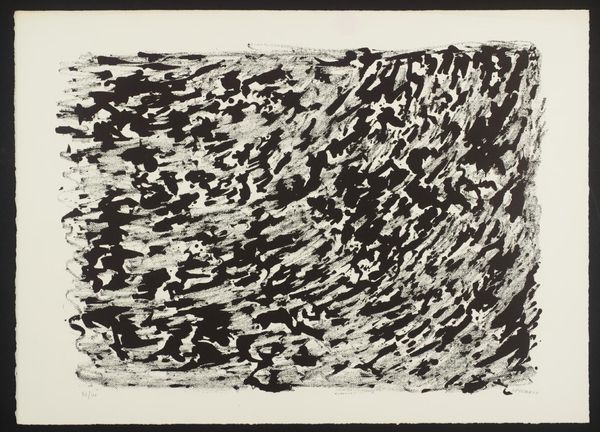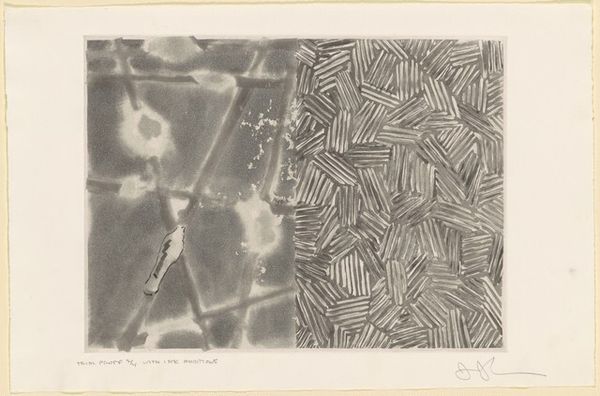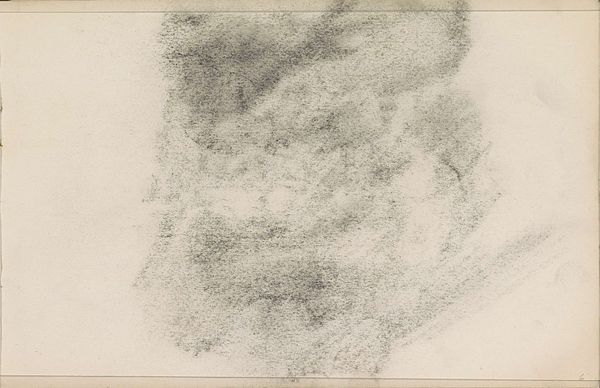
Dimensions: image: 240 x 500 mm
Copyright: © Richard Long | CC-BY-NC-ND 4.0 DEED, Photo: Tate
Editor: This is Richard Long's "Slate Drawing One," from the Tate collection. The stark contrast and linear texture feel like a landscape viewed through a rain-streaked window. What do you see in this piece? Curator: For me, Long's work brings up questions about our relationship with the land. His interventions often challenge traditional notions of sculpture and land art, asking us to consider how we impose ourselves, and our aesthetic values, onto the natural world. How does this drawing, for you, relate to those themes? Editor: I guess it makes me think about how even a simple representation is still a kind of intervention, a way of framing and interpreting something. Curator: Precisely. And by using slate, a material directly sourced from the earth, Long emphasizes this connection, blurring the line between representation and raw material. It's a powerful commentary on our ongoing dialogue with the environment. Editor: I hadn't thought about the material itself being so important to the message. Thanks for pointing that out! Curator: Absolutely! Art helps us look critically at these interactions.
Comments
Join the conversation
Join millions of artists and users on Artera today and experience the ultimate creative platform.
tate 6 months ago
⋮
This is one of a suite of four screenprints (see Tate P78718-20) Long made from direct contact with the surfaces of slabs of slate and limestone. Slate Drawing One, as its title indicates, is based on a pencil rubbing taken from textured slate. The drawing was turned into a screenprint using a photo-separation process and printed using repeated additions of ink until the image had reached the tonal balance required by the artist. The portfolio was printed by Advanced Graphics, London and published by Ridinghouse Editions, London, in an edition of forty plus ten artist’s proofs. Tate’s copy is the seventh in the edition.
